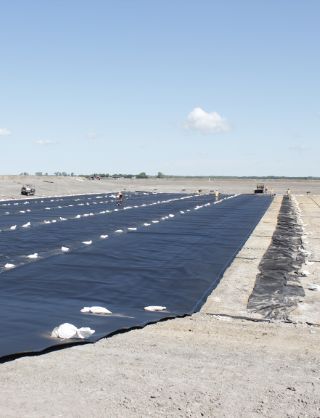If you’ve already started your holiday shopping, you’ve likely seen some pop-up shops in your local mall. They can be found in traditional brick-and-mortar stores (a store within a store), as a stand-alone kiosk, or, borrowing from the food truck fad, popped out of a motorized vehicle.
Consumers look to pop-ups for a more specialized shopping experience, listing seasonal products as the main reason to visit. While most retailers have traditionally used pop-up shops to generate additional sales around the holidays, brands are beginning to discover that pop-ups can also help achieve a variety of marketing goals in addition to seasonal sales.
1. Test new markets
For brands considering a permanent, brick-and-mortar location, pop-up shops are an excellent way to see how your brand will be received in a new environment. Smaller companies might consider doing a pop-up shop to test a new location, while larger companies might experiment in a new country altogether. The temporary nature helps mitigate costs and commitment and allows brands to market-test without being bound by long-term leases and costly tenant improvements. Pop-ups not only provide retailers an opportunity to establish a presence in the market prior to opening their permanent store, they also offer landlords an opportunity to incubate these retailers, with the intention of migrating them into long-term tenants.
2. Experiment/speed-test new products
Pop-ups are not only a tool to generate sales, but they also serve to create an interactive component that can bring a brand to life. The cost-effectiveness and mobility of pop-up shops allow brands to gauge demand by testing new products and promotions, while creating a boutique-style shopping experience. Major brands like BMW, Nordstrom, Louis Vuitton and IKEA have all embraced pop-up shops to test out new concepts and new locations. Pop-up shops offer a unique experience for consumers, allowing them to discover products that they may not have the opportunity to connect with offline. For example, a brand might test if its new line of BBQ chips that has been driving sales in North America will be as successful in Asia, or if they should be launching ubiquitous flavors like fried chicken or shrimp in a pop-up in that market.
3. Put your brand in front of new people
Positioning your product in a pop-up shop can help you understand how your existing merchandise performs with customers and help you gather real-time feedback on how it can be improved. Giving potential customers a live demonstration, even if you want to drive pre-orders before manufacturing, is a great way to demonstrate the value of your product and get through to those early adopters.
4. It’s cost efficient
Because pop-up shops are often temporary and smaller in size than traditional retail stores, the cost of overhead is usually lower. This is especially advantageous for new businesses that don't have the funds for a conventional retail space. Pop-ups keep costs low, which allows brands to be nimble and to make the necessary adjustments that best suit a market’s unique demands.
5. Deepen the relationship with the customer
Focusing on customer relationships is important to the long-term success of any business. Organized to encourage informal face-to-face interactions, pop-up shops allow businesses to extend their brand and build awareness. They also provide a way to interact with customers face-to-face and educate them about new products, services or features.
Pop-up shops can virtually set up anywhere: In vacant buildings, oversized parking lots, public spaces, in conjunction with a relevant event or within another store.
Space within another store
This is a good way to tap into an existing customer base and expose your brand to a new audience.
Shopping centres
These make perfect sense for a pop-up shop because they’re already the destination for ready-to-buy consumers.
Outdoor pop-up shops
Pending permit approval, some brands find that outdoor spaces are ideal for their pop-up shops. High pedestrian traffic is essential in this case, so a space that is visible and easy to access is best.
There are a few important legal requirements that need to be satisfied before opening your pop-up:
A business licence
You may be required to have a business licence or registration in your target jurisdiction to open a pop-up shop. As the licensee, you have legal authority to utilize the licensor’s property. Depending on what you sell, you may need special permits (especially for food and alcohol sales) to operate your store.
Lease agreement
A written agreement with the property owner or management company you’re working with is highly recommended. These usually take the form of a lease agreement and for pop-up shops the length and terms of the contract can vary. Under a lease, the person operating the pop-up is considered a tenant, and given exclusive possession of the space leased for the duration of the agreement. Be sure to review the terms and conditions carefully, as they will include rules about modifying the space, hours of operation and several of the other key aspects, including rent and utilities.
Insurance
You’ll likely need to purchase additional coverage, specific to temporary locations. Pop-up shop insurance provides comprehensive coverage on a short-term basis, including protection for public and product liability, employer's liability, accidental damage and business interruption coverage. Premiums for pop-ups are comparable with rates for traditional, long-term coverage.
Know your audience – know your brand
Knowing the trends that are going to influence your customers can help you anticipate what they are going to need, while keeping the brand’s voice present and consistent. A good brand does more than establish a visual language; it creates an immersive experience for every person who enters the shop and builds a relationship with its customers to build brand loyalty.
Look for short-term rent
Some of the biggest reasons a short-term lease is attractive to business owners is cost, ease of mobility and the ability to take advantage of changing market conditions. Pop-ups feature very flexible terms, with rates significantly lower than ordinary commercial leases. Also, since some rent is better than no rent, pop-ups are good for landlords who benefit by filling an empty storefront with a temporary, bustling space that attracts customers.
Be creative with your space
This is the chance for your company to put its brand front and centre and control your brand story. Everything from the colours and texture of your pop-up shop, to the staff you hire is part of your brand story, and every element should reflect the truth about your brand to your audience. A great brand story will enable you to stand out, increase brand awareness, create customer loyalty and boost profits.
Consider the inventory
While location is arguably the most significant factor to consider when building a pop-up shop, inventory also plays a vital role in a brand’s opportunity to make an impression with its customers. Less is more when it comes to pop-ups, and best-selling items should be the focal point. In addition, creating fully merchandised looks is a great way to get your customer to visualize owning the item, and possibly add more than one thing into their cart.
Have appropriate staffing
It’s crucial that you invest time and money to ensure proper training of the store’s staff. Like all employees, your pop-up hires are a reflection of your brand and will have to believe in the essence of your brand to be successful.
A lucrative model
As store vacancies rise, the change in the business landscape presents an opportunity for savvy entrepreneurs and existing businesses to try something different. Opening a pop-up shop can be a lucrative and cost-effective endeavor for brands looking to boost their visibility or attract new customers.
Especially effective around the holidays, the pop-up industry is now hailed as a $50 billion industry.







